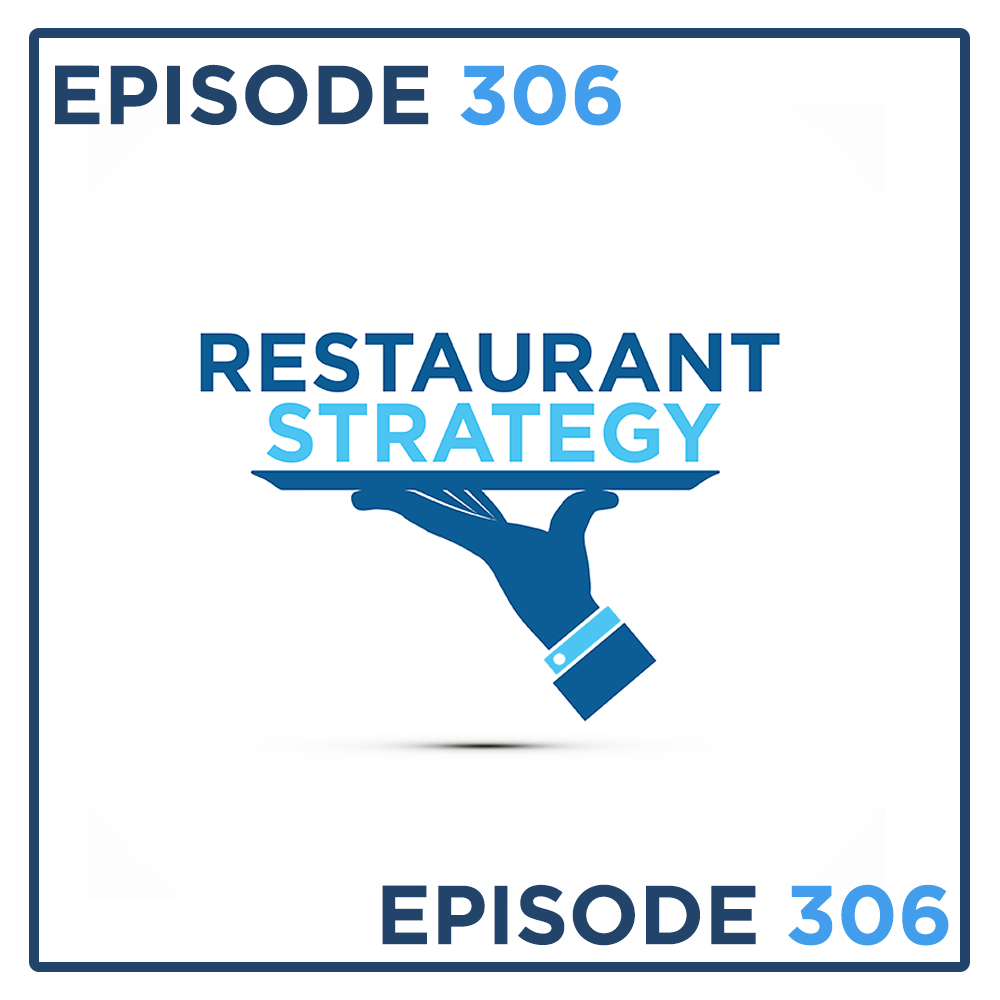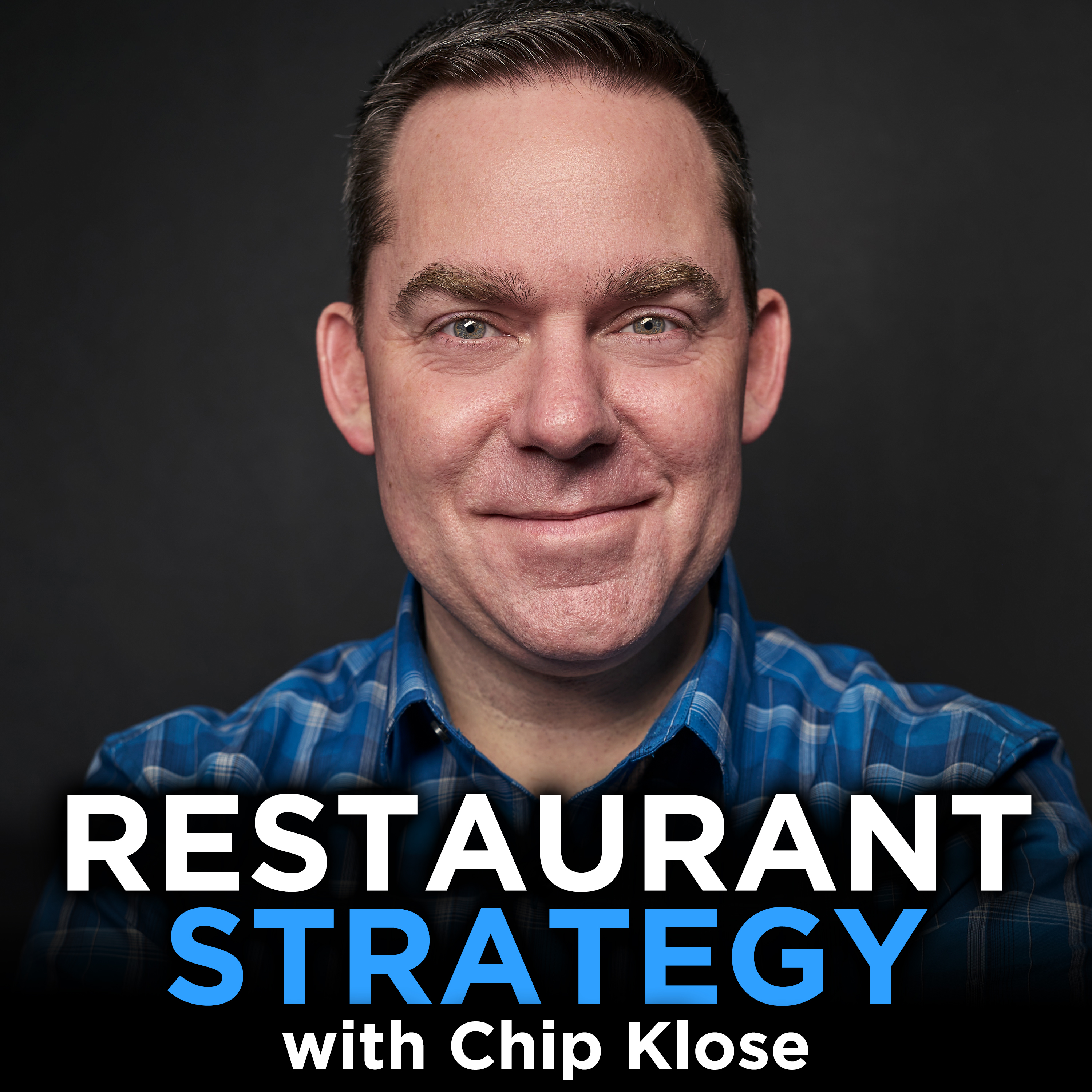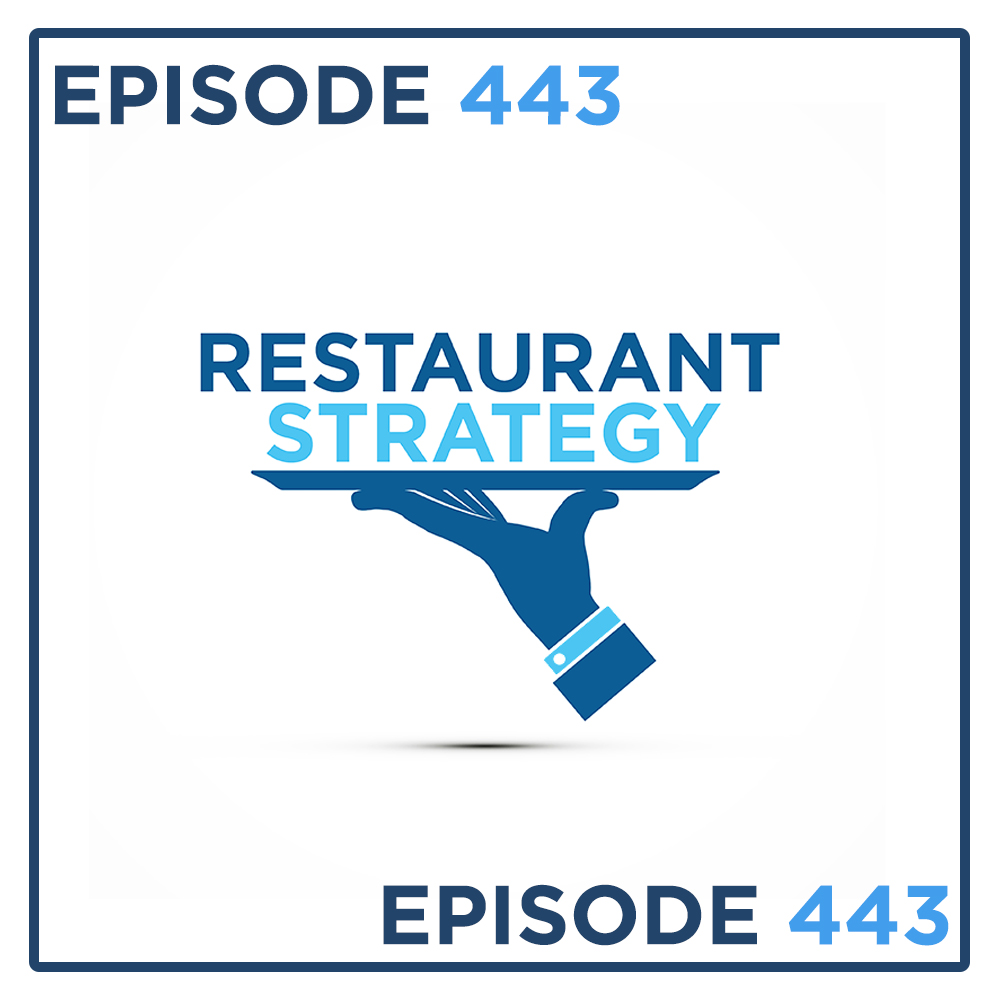Episode Transcript
[00:00:00] You're being sold a dream. Every week, some tech salesperson calls you up with the next revolutionary platform that is definitely going to transform your restaurant. AI powered this, cloud based that, machine learning and everything else. They promise it'll increase sales. They promise it'll reduce costs. They guarantee that it will make your life easier. But here's the reality.
[00:00:23] Most restaurant technology is expensive and it's complicated. And it doesn't always deliver the ROI that these salespeople promise. So today I'm going to cut through the noise and we're going to talk about restaurant tech that actually moves the needle. All of that on today's episode of Restaurant Strategy.
[00:00:40] There's an old saying that goes something like this. You'll only find three kinds of people in the world. Those who see, those who will never see, and those who can see when shown. This is Restaurant Strategy, a podcast with answers for anyone who's looking.
[00:01:11] Hey, everyone. Chip Close here. Today we are talking about restaurant technology. And I want to be clear about something right up front. I am obviously not anti tech. I am anti bad tech. I'm anti technology that costs more than it saves. I'm anti technology that makes your operation more complicated instead of simpler. The restaurant industry spends billions of dollars every year on technology that honestly just doesn't work or it doesn't integrate or it doesn't deliver measurable results. We're going to change that today. As many of you know, my name is Chip Close. I'm the host of this show. I also run something called the P3 mastermind. So it's a group coaching program. To date, we've put hundreds of people through the program. I help independent restaurant owners increase the profitability of their restaurants. If that's something that's top of mind with you, then set up a call. It's absolutely free. It's 30 minutes. We just get to know each other. You'll chat with me or someone from my team and let's just see if you're a good fit. RestaurantStrategyPodcast.com Schedule as always, that link is in the show notes. Okay, so we're gonna start this conversation about restaurant tech with a story, right? I'm trying to do this more and more. I'm. I'm working with a P3 member, let's call him Steve. Steve runs a small chain, three casual dining locations. It's like comfort food out in Ohio. They're good restaurants. The operation is solid, but Steve got caught up in the technology hype over the last 18 months. So over that time, Steve bought into every new platform that came along. A customer relationship management system for 400 bucks a month. And I, an AI powered scheduling platform for more than $300 a month. Social media management tool for $200 a month. Invent management for more than $350 a month. A loyalty program. You get the point. Total monthly tech spend was almost $2,000. It was almost 24k a year on $2.4 million in annual sales across three locations. That's almost 1% of revenue specifically going towards technology.
[00:03:16] And here's where the actual problem lies. Steve couldn't tell me the ROI that he was getting from any of these platforms. And the scheduling software was super complicated and way harder to understand. The inventory system didn't integrate with his pos, like what are we doing? So he was double entering everything. The loyalty program had 47 members after 18 months. That's not working.
[00:03:40] It's what I call the shiny object syndrome. Every new technology promises to be the magic bullet that solves all your problems. But technology doesn't solve problems. Systems solve problems. Technology just makes good systems work better. So let's talk about the technology that actually delivers roi. First category, POS systems. Your POS is the foundation of your restaurant's tech stack. Obviously you know that if you haven't heard that, that's the thing that is the brain, the center of everything you do. Everything else builds on top of that. But here's where most people get things wrong. They focus on features instead of functionality. So they want the system with the most bells and whistles instead of the system that does the basics well. So there are platforms out there. I'm not going to name names, but you guys know which one I'm talking about. And they say, oh, we got one of that, we got one of that, we got one of that. Everything under the hood. Because consolidation is something we're going to talk more and more about over the next, I'll say three or four years.
[00:04:43] But if you put all this stuff under the hood and it's not best in class, if it's clunky to use, if it's inefficient, you still have to double enter. Well then what's the of having it better to have the best thing out there. So again, that first category I want to talk about is your POS functionality before features, right? Most people want a system with most bells and whistles instead of a system that does the basics really well. You need pos, right? So your POS needs to do four things perfectly Take orders accurately, process payments quickly, track sales data, and most importantly, it's got to integrate with all the other systems in your restaurant. That's it. Those four things. Everything else beyond that becomes a nice to have but not a need to have. So I once worked with a restaurant, spent about $15,000 in a POS system with tablet ordering, KDs, screens, online ordering, loyalty, inventory management, scheduling. Sounds amazing. Write everything under the hood.
[00:05:44] Problem was, the system was so complicated, the servers made mistakes constantly. Orders were getting entered wrong, payments were getting processed incorrectly. The KDS screens kept crashing. It took three months and another $5,000 in training and setup fees to get it to actually work properly. Meanwhile, the restaurant down the street was using a basic system that cost $3,000 and did exactly what they needed. Fast, accurate order entry and payment processing. Their operations were smoother, therefore their staff was happier. They were making more money ultimately. Then what happened is they ended up switching. They had to. And the switching cost ended up being another expense. Now, second CAT or first category is pos. Second one, Kitchen display systems. If you are still using paper tickets, you are bleeding efficiency. Kitchen displays eliminate lost tickets. They improve communication between the front and back house and they give you real time visibility into kitchen performance.
[00:06:44] But listen, very important, do not overcomplicate it. You don't need displays that show food, cost, labor, efficiency, weather forecast. Nope. You just need displays that show the orders clearly. Screens that update in real time, that actually integrate with your pos.
[00:07:01] Again, you're seeing the common thread here. Simple, reliable, functional. So I work at a pizza joint that installed KDS and saw their average ticket time drop from 18 minutes to 14 minutes. Which anyone out there who runs a pizza place know that this is the holy grail. There's only so many pizzas you can fit in the oven at a time. It is about getting more efficient. Faster service meant quicker table turns, which meant more revenue. The displays paid for themselves in less than four months.
[00:07:30] Third category, I want to talk about online ordering and delivery integration.
[00:07:35] This is no longer optional, it is essential. But you don't need a custom built platform that costs 50k.
[00:07:42] You just need something that integrates with your POS.
[00:07:45] Something that can actually manage orders from multiple channels and doesn't charge you ridiculous commission rates. Key is finding a platform that consolidates all your online orders, your website, your third party, your catering orders, all of that into one system. You don't want your staff managing five different tablets for five different platforms.
[00:08:05] Now the fourth category, inventory management. And this I promise, is where you will be able to see real ROI almost immediately when you do it right, Good inventory management software tracks usage. It should predict ordering needs. It identifies waste and calculates your true real time plate costs. But and this is important, it has to integrate with your pos. If you are manually entering sales data into your inventory system, you are wasting time and creating opportunities for errors. So I worked this restaurant group that implemented integrated inventory management across all eight of their locations. They reduced food waste by 12%, improved order accuracy by 30%, and saved eight hours per week per location on admin. The software paid for itself by its third month.
[00:08:58] Now let's talk about what doesn't work. At least not for most restaurants. Customer relation management systems Unless you're doing high volume catering or events, you don't need some fancy CRM. Your POS tracks customer data. Use that your your mailchimp acts as a really mailchimp or whatever. Your email service provider acts as a really good CRM. Eventually, when you've got multiple when you've been around for a while, you're doing massive amounts of revenue. You have multiple locations. CDP like Biki or seven Rooms can be crucial, but you don't need that easily early on Scheduling this AI powered scheduling sounds cool. It doesn't always work. These systems promise to optimize your labor costs using machine learning. They do everything for you, so to speak, but they don't understand your specific business.
[00:09:49] There are AI powered scheduling tools like Time Forge out there that actually works because it works with you instead of doing the job for you. You don't need the easy button. You don't need the silver bullet. You need a tool that will work with you that will help you be better. Right? Because these systems don't necessarily know that Tuesday lunch is slow except when there's a home game. They don't know that your best server can handle six tables while your newest server can barely handle three. They don't know the difference between Joe and Susie. You do social media management platforms. Here's another thing that man, I just don't know that it works. I know people are out there paying 1, 2, 3, 4, 5 $1,000 a month for something that a teenager could do better. Post good photos, good videos of your food, respond to reviews, engage with customers. You don't need AI and you don't need some fancy piece of software to do it. If you want to use something like Agora Pulse or Buffer or Sprout Social to help you organ all of that, fine, great. But you don't need the fanciest Top of the line, all the bells and whistles. You don't.
[00:10:52] Here's my framework for evaluating restaurant tech. First question you got to ask is what specific problem is this going to solve? And if you can't articulate the exact problem in one sentence, you don't need it. Second question, how will we be able to measure success if the vendor, your salesperson, can't give you specific metrics? Right? Increase sales, reduce cost, time savings. If they don't give you stuff that you can track, you got to walk away.
[00:11:19] Third question you got to ask is what's the total cost of ownership? Don't just look at the monthly fee. Include the setup costs. Include training costs, integration costs, switching costs, and yes, ongoing support. So that $99 a month platform might actually cost five grand by the time you actually get it up working properly. I told that story earlier.
[00:11:41] Fourth question, man, this is crucial. What happens when it breaks? Not if it breaks, but when it breaks. Because guess what? Technology fails.
[00:11:51] Restaurant tech is no different. Tablets crash, Internet goes down, the software has bugs. Are there backup systems in place? Can you still operate if the technology fails? There's this restaurant out in Chicago, man, they got this right. They identified three specific problems. Orders were getting lost between front and back of house. They were over ordering inventory and they couldn't track which menu items were profitable, profitable in real time. So they bought three pieces of technology, KDS systems to eliminate those lost orders. Integrated inventory management margin edge, which helped optimize ordering. And they upgraded their POS reporting to track profitability. Total cost was like eight grand. Total monthly savings, twelve hundred dollars in reduced waste, faster service, better menu mix. Here's what they didn't buy. They didn't go get the new fancy loyalty platform or the social media scheduled or the AI powered this and the automated and the stuff they know.
[00:12:48] Not that those things were bad, some restaurants may need those, but this specific restaurant didn't because they didn't solve the specific problems that they were facing. And that's the key.
[00:12:59] Solve the actual problems you have, not the problems that tech vendors thinks, thinks that you have or thinks that you should be solving. Now, before we finish, let's talk about integration, because again, this is where a lot of places fall short. They buy five different systems from five different vendors and none of them talk to each other. So your POS doesn't integrate with your inventory system. Your online ordering doesn't integrate with your pos. Your payroll doesn't integrate with your scheduling. So you end up entering the data into multiple systems, which Wastes time, creates errors. Or you end up with data in silos. Your sales data in one system, labor data in another, your inventory and plate costs in a third.
[00:13:38] Choose platforms that integrate. It is way better to have three integrated systems than five standalone systems. Even if the integrated systems don't have every feature you want. The efficiency that you will gain from integration almost always outweighs whatever features you're missing. I want to talk about these handheld POS systems for just a minute, because this is technology that delivers immediate ROI for full service restaurants. Servers can take orders at the table, process the payments without having to go over to a terminal, therefore spending more time on the floor with the customers instead of running back and forth to the terminals. The result? Faster table turns, higher check averages, better customer service, better customer experience.
[00:14:22] So I worked with a restaurant that implemented handhelds, and now I've seen so many, so many of my clients do it, and they saw their average table turn time decrease by 12 minutes. So it went from like 74 to 62. It was unreal. And their server productivity increased by over 25%.
[00:14:39] Here's the key, though. You need handhelds again that integrate. So a lot of the great POS systems now have handhelds. If yours doesn't, then you can go out and find a third party. But don't just buy standalone tablets that require separate processing. It creates complexity and, and, and, and it's clumsy. Make sure it integrates with your pos.
[00:15:01] All right, let's talk about data. Let's talk about reporting, because again, this is where I see a lot of things fall short.
[00:15:07] Your POS system, right, is obviously collecting thousands of data points every day. What sells, when it sells, what people are buying it, how much those tables are spending. But most restaurants aren't actually using this data. You should be able to answer these questions instantly. Number one, what's your most profitable menu item? Number two, what day of the week generates the highest sales per labor hour? Number three, which server has the highest check average of the week?
[00:15:33] The highest check average, Right. What time of day do you turn tables? That'd be nice to know. If you can't answer all these questions, you're not using your technology effectively. Invest in better reporting tools and training to use the tools that you already have. So here's a mistake. I see constantly restaurants that buy expensive tech, that don't actually train their staff to use it properly. So maybe you know how to do it, but your managers don't, therefore your servers don't. You spend 10,000 bucks on a new POS system, but your servers are still using it like the cash register.
[00:16:03] If you're not using it right, you're not getting any of the benefits of these advanced features. Technology is only as good as the people using it. So budget time and, yes, budget the money for training. Create standard operating procedures. Hold people accountable for using the tools correctly. All right, here's your homework for this week. Audit your current tech stack. List every system you're paying for, how much it costs per month. For each system, write down the specific problem it's supposed to solve, and then figure out how you measure its success. If you can't clearly articulate the problem and the measurable benefit, cancel the system. If the system doesn't integrate with your other systems, see if there's a better alternative that does integrate. Focus on the basics. POS KDS systems. Integrated inventory management. Online ordering. Get these four things working perfectly before you even think about adding anything else.
[00:16:58] Bottom line of this whole thing, technology should make your restaurant more profitable, more efficient, and, yes, easier to operate. And if it's not doing all three of those things, I'm going to guess you don't need it. All right, that's it. Again, my name is Chip Close. I am the founder of Restaurant Strategy. I am your host of this podcast. I know there's a lot of great shows you can listen to. I appreciate you making this a part of your week. Appreciate it, guys, and I will see you next time.


